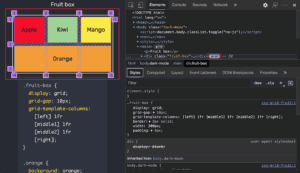We look into how powerful it is to use JavaScript and HTML together to make data grids and tables that are dynamic and full of features that go beyond simple presentation. In a digital world that is getting more and more data-heavy, it’s not enough to just provide information. To receive useful information, users need to be able to swiftly sort, and interact with it. A “KoolGrid” is a smart way to deal with tabular data. It turns static lists into interactive tools that make it easier for people to utilize and understand the data. This page goes into detail on the ideas and methods of making these kinds of advanced grids, which are a great way to manage and show off complicated datasets on the web.
HTML and JavaScript need to work together perfectly to make an advanced data grid like KoolGrid. HTML is the main structural design for your data grid. It usually uses a <table> or <div> based layout to set up rows, headers, and cells. It tells you what data is there and how it is organized at first, which makes dynamic features possible. It’s important that the HTML is well-formed so that screen readers can understand the grid’s information correctly. JavaScript is what makes KoolGrid work. It can do a lot of complicated things, such managing and presenting data (including simulated scrolling for enormous datasets), sorting and filtering, pagination and search, row selection and inline editing, and being responsive and customizable. These features turn a static table into a useful, interactive tool.

A truly “Kool” grid puts the user experience first, turning raw data into useful insights through easy-to-use interactions. Intuitive data exploration and manipulation are at the heart of a better user experience. Users should be able to rapidly access the information they need, change the way it looks to fit their needs, and even change it right in the grid. Draggable columns, frozen columns/rows, and contextual right-click menus (all powered by JavaScript) are some of the features that make data browsing very easy and efficient. These features make the grid a dynamic workspace. Grids that work well also give the user clear visual cues and feedback. An arrow icon clearly shows the sort direction when a column is sorted. When a filter is applied, the number of rows shown may change dynamically. Hover effects on rows or cells give immediate visual feedback, which helps the user and makes the interface seem more responsive.
When building a KoolGrid, you frequently use existing libraries and make sure it runs well. A lot of “KoolGrids” are made with strong JavaScript grid frameworks as AG Grid, jExcel, DataTables.js, or handsontable. These libraries have everything you need, including pre-built parts and rendering engines that are made just for them. This speeds up development a lot and makes sure everything works correctly. The best library for your project depends on its needs, and how much freedom it needs. When you have to work with huge datasets, such those with thousands or even millions of rows, you need to be very careful about how you make things run faster. It is vitally crucial to use efficient data structures and optimal JavaScript approaches to maintain the grid fast and responsive, even when there is a lot of data.
At “KoolGrid,” we think that using JavaScript and HTML together with powerful libraries and careful design may make data grids that are truly great. We give people more influence over their data by turning static tables into interactive tools for exploration, manipulation, and analysis. It’s not just about looks when you invest in a well-designed and highly functioning grid. It’s also about giving users a better experience that makes it easier to handle, interpret, and act on complicated information in the digital era.
Build a portfolio project — start learning today.”